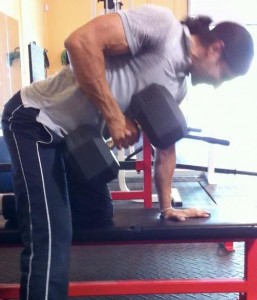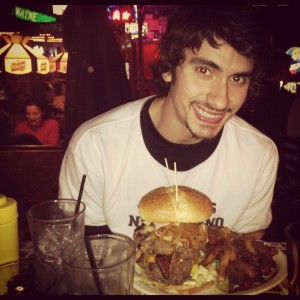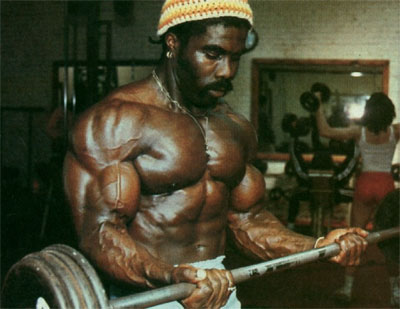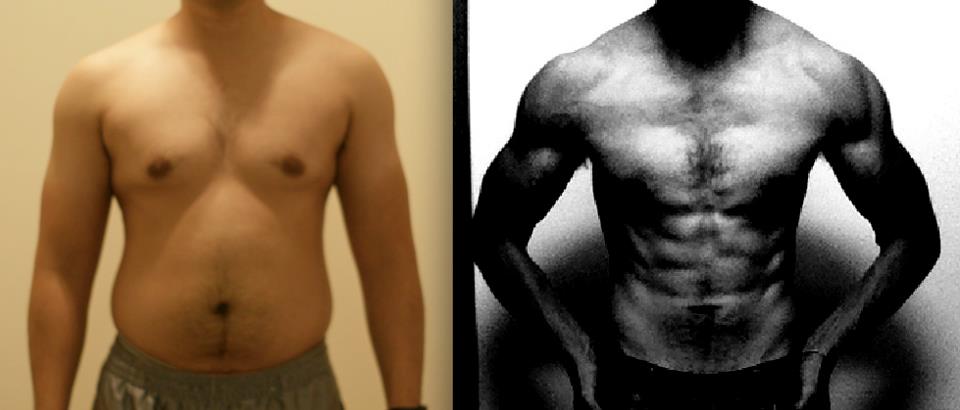“So what do you think, Anthony? Does he take steroids?” Questions like these, I’ve come to expect over the years. So I sipped my beer and peered into the crowd of people tailgating at the Pittsburgh Pirates game, trying to find the person of interest. Looking at the mass of people drinking cheap lite beer [...]
 “So what do you think, Anthony? Does he take steroids?”
“So what do you think, Anthony? Does he take steroids?”
Questions like these, I’ve come to expect over the years. So I sipped my beer and peered into the crowd of people tailgating at the Pittsburgh Pirates game, trying to find the person of interest.
Looking at the mass of people drinking cheap lite beer and eating overly processed meats struck something within me. A concept I intuitively knew was brought to life: everyone is so damn different.
Some people looked like Snoop Dogg. Others, like Biggie Smalls. And then, of course, there were those that were some kind of LL Cool J jacked.
This made me think about skinny-fat ectomorphs, and how people tell me that the body-type doesn’t exist. And it’s true, to a point. Somatotypes were created for psychology. Not physiology.
But everyone reacts differently to food. To exercise. To life. The mechanisms as to why don’t really matter. So for those of you that balloon around the waist and lower chest and yet somehow sport tiny wrists and upper arms, this is for you. From one skinny-fat to another.
1. Create a solid base – get lean
Let’s talk about “bases.” Having a solid “base” to work from is an underrated commodity in the physique business, especially among those that don’t want to get overly fat in the muscle building process.
People are quick to recommend a full out “bulk” to those looking to gain muscle. This is what I like to call, the sculptor method — throw as much clay together as possible and carve away at the details.
But us skinny-fats have perceived ourselves as “fat” long enough. Prolonging this mental turmoil through “bulking” is a failure waiting to happen.
Instead, think “bases.” Building muscle is much easier when starting from a solid base—a physique that you’re comfortable with, allowing nutrient autoregulation to be used more effectively.
The “lose fat, gain muscle” route is tempting to follow. While it can be done, the process is slow and inefficient when you’re at a higher body fat. Mentally, it’s more refreshing to make serious and tangible progress towards a goal. So for most everyone worried about body fat, it’s better to get lean and be done with it.
If you have skinny-fat baggage, you’re probably sick of excess body fat. So get rid of it. Now. And don’t let it come back to a discomforting level ever again.
Tariq Qureshi was kind enough to let me use him as an example, as his personal situation is perfect for this reminder. Below is a before and after photo of Tariq.
Tariq’s story starts out similar to most other’s. He wanted to get bigger so he pounded down protein and carbs, thinking that fat would somehow into muscle. After realizing he was going down the wrong path, he spent the next few months leaning down.
During the process, he lost a lot of muscle. So he tried bulking again, but with only excess body fat to show for it. Eventually, he leaned down while questing for strength using intermittent fasting.
What I like about Tariq’s journey is that it’s an echo of mine. But looking back, we share similar feelings about our failures.
It has taken me much longer than some of the others to achieve a reasonable level of leanness, but I have learned a lot about my body during that time.
– Tariq
 Tariq’s story is important because he created a wonderful “base” to work from. Sure, he lost some muscle getting to the “base.” But once there, slowly building up is much easier because a lean physique affords a lot of freedom.
Tariq’s story is important because he created a wonderful “base” to work from. Sure, he lost some muscle getting to the “base.” But once there, slowly building up is much easier because a lean physique affords a lot of freedom.
Now, most skinny-fats cringe when I tell them to lean down and forget about muscle mass. Don’t get me wrong, do your best to retain muscle. But don’t obsess over it. Our genes aren’t prone to the whole idea of being “jacked and strong” in a calorically deprived state.
But the short term loss is a long term gain. Reaching an ideal “base,” makes building easier. You can err on the side of “more calories” more frequently, which means better muscle building potential.
So take two, four, six, whatever, months and lock yourself in on fat loss. Lean down to a comfortable level. Get to that solid “base,” and then slowly build from there.
2. Cheat days usually mean game over
During the week, you kill it. You’re on your way to an awesome base physique.
And then comes the weekend.
You worked hard. You deserve a little freedom, don’t you? So you have a drink or two. Maybe some french fries…and ice cream. Hot wings. Cake, too. And some of that sweet tea you were practically addicted to. And before you know it, you’ve gone “overboard.”
While cheat meals can be a powerful rejuvenation tool, most people that implement them on a weekly basis don’t fare too well unless a calorie counteracting strategy is used. (Like in John Romaniello’s Fat Loss Forever, or something.)
 I know, I know. Tim Ferriss said cheat meals were OK. And I’ve not only written about, but also employed cheat meals more than most people.
I know, I know. Tim Ferriss said cheat meals were OK. And I’ve not only written about, but also employed cheat meals more than most people.
But at the beginning of your journey, you need structure. You need to learn discipline. So while I talk about sipping beer and indulging here and there, know that there was a stretch where I didn’t look at any sweets or “junk” food. Cheating is better suited for those already lean enough and disciplined enough to handle the effects.
Although I’m growing away from the concept of “cheating” (a decision made for many reasons that will be written about in the future), I still technically “cheat” every week. The foodie inside of me wins most times, especially because I enjoy food challenges. (There’s a three pound hamburger challenge that I’ve been eying up, for instance.)
But there’s a difference between a minor indulgence and gorging yourself into oblivion (which I used to do regularly). Overall, I think the concept of “cheating” is murky water that carries a lot of psychological baggage.
After a year of feasting, fasting, and everything in between, I’m of the opinion that most people aren’t prepared for “cheating,” as it’s difficult to manage and tends to cause frequent setbacks and mental lapses. So when you’re trying to lean down, don’t think about cheating. (Unless you’re prepared to fast or use a calorie counteracting strategy, as referenced above.) Once you reach a comfortable body fat, however, feel free to experiment. But tread lightly. And don’t say I didn’t warn you.
3. Do isolation exercises, but don’t go overboard
 An old mentor of mine, Adam Wehmann (some may know him as Chicanerous) subconsciously taught me about the concept of “important work.” Important work was the stuff you would do if you were strapped for time. In other words: you have thirty minutes to train, which lifts are you going to do? Of course, this always corresponded to the big compound lifts: squats, deadlifts, presses, and pulls.
An old mentor of mine, Adam Wehmann (some may know him as Chicanerous) subconsciously taught me about the concept of “important work.” Important work was the stuff you would do if you were strapped for time. In other words: you have thirty minutes to train, which lifts are you going to do? Of course, this always corresponded to the big compound lifts: squats, deadlifts, presses, and pulls.
Now, I’m known for telling skinny-fats to train their arms. And they should. Anyone that wants big arms and doesn’t directly train them showcases flawed logic.
But training your arms doesn’t mean devoting one hour to curls, or having an “arm” day. To clarify, I simply mean picking one or two direct arm exercises and spending ten or so minutes getting some work in after the “important” work for the day is done.
As for what arm exercises are best, I’m a fan of simplicity. The standing barbell curl is an underrated exercise. It raises the heart rate more than any seated exercise, bench press included. It also hits the upper back and “core” pretty well. It’s gotten some negative press for not being very anatomically friendly. But if they don’t bother you, you’re better off having included them in your program
++++++
What do you think about starting from a solid “base?” About not cheating? And about including isolation work?
I’d love to hear your opinion, especially if you feel you are a skinny-fat sufferer. Leave your comments below, and I’ll be sure to reply.
